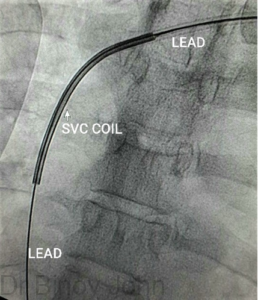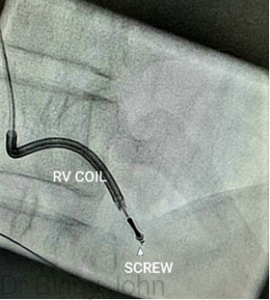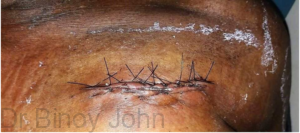What is sudden cardiac death?
Sudden cardiac death (SCD) is when a person dies suddenly due to a cardiac cause. For the heart to function as a pump it needs electrical impulses. These electrical impulses are generated from a battery located in the heart called the sino-atrial node (SAN) and are then conducted via an electrical conduction system (wiring) in a single direction, to the atrio-ventricular node (AVN) and then through electrical pathways or bundles called bundle of His, right bundle branch (RBB) and left bundle branch (LBB) to reach the heart muscle. These impulses control contraction and relaxation of the heart muscle. The normal heart rate is regulated by the SAN and is 60 to 100 beats per minute. In certain conditions these electrical impulses can originate from sources other than the SAN, like the muscle of the ventricle at very fast rates, called ventricular arrhythmias. At such high rates the heart is not able to effectively pump blood out of the ventricles to reach the tissues and especially the brain. When blood supply to the brain is reduced, it can result in sudden unconsciousness and when this is prolonged for two minutes or more can result in sudden death.
How can you prevent sudden cardiac death?
Sudden cardiac death can occur in certain cardiac conditions and especially in patients with heart-failure. When ventricular arrhythmias which can cause sudden cardiac death occur an electrical shock needs to be administered on the chest and over the heart as soon as possible with an external cardiac defibrillator to convert the arrhythmia to a normal heart rate and rhythm.
Can sudden cardiac death from ventricular arrhythmias be prevented?
Emergency and immediate electrical cardioversion by applying a shock on the chest over the heart is the treatment for preventing sudden cardiac death from ventricular arrhythmias. However it has to be done within two minutes. Often it is not possible to reach a hospital so fast. Therefore, in people with already known cardiac conditions like severe heart failure who are prone for ventricular arrhythmias devices called Implantable Cardioverter Defibrillators (ICD) can be implanted inside the heart. These devices have sensors which can instantly detect ventricular arrhythmias and can give the appropriate shocks from within the heart, thus converting the ventricular arrhythmias to normal rhythm and rate and thus preventing sudden death.
What is an Implantable Cardioverter Defibrillator?
A single chamber ICD consists of a pulse generator and battery, which is a tiny computer which detects the ventricular arrhythmias and delivers the shock immediately through a wire or lead which has two coils. One end of the wire is placed inside the right ventricular chamber of the heart and screwed into the RV muscle and the other end is connected to the battery. A dual chamber ICD is when a second or additional wire is placed inside the right atrium of the heart.
Procedure: How is an ICD placed inside the heart?
The ICD implantation procedure is mostly done under local anaesthesia and deep sedation and occasionally under general anaesthesia. The procedure is done with all sterile precautions inside a cardiac catheterization laboratory.
Initially after administering local anaesthesia, a surgical pocket is made in the tissue below the skin called the subcutaneous tissue in a location below the collar bone using a surgical blade and an electrical cautery. This location below the collar bone is selected because it is in this area that lies the subclavian and axillary vein, which has direct connection to the right chambers of the heart. It is through the axillary vein or less commonly the subclavian vein that the lead has to be passed into the right ventricle of the heart.

After making the surgical pocket, a needle is passed into the subclavian vein. The subclavian vein is connected to the superior venacava which empties into the right atrium of the heart. The right atrium opens into the right ventricle of the heart. Once a puncture is made in the subclavian vein, a sheath is placed in it. Thereafter the ICD lead which has got two coils on it called the superior venacava (SVC) coil and right ventricular (RV) coil is advanced through the sheath into the right ventricle. (See image)

Once a good position of the coil tip is obtained in the RV, the coil tip is screwed on to the RV muscle. (See image)

Thereafter, the opposite end of the ICD lead is connected to the ICD generator and the generator is inserted into the surgical pocket created at the beginning of the procedure. (See Image)

Thereafter the pocket incision is closed with sutures. (See Image)

Expertise: Dr Binoy John is highly experienced in ICD implantation in patients with advanced heart-failure.






